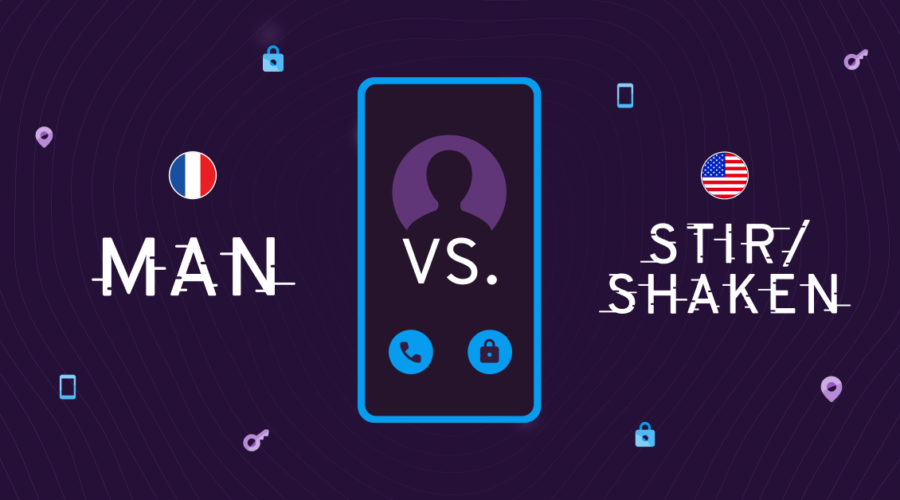For product and operational leaders, understanding every aspect of E911 compliance isn’t high on the list of weekend fun. It’s a massive challenge to implement a compliant emergency calling environment in today’s dispersed workforce. But staying on top of new regulations is not just about adhering to the law—it’s about creating leverage to enhance the reliability, innovation, and effectiveness of emergency response solutions.
The integration of pending regulations, such as the FCC’s PSAP Outage Notification rules (“PSAP Outage Rules) (See: FCC 22-88 Report and Order) along with established mandates like Kari’s Law and RAY BAUM’s Act, underscores a dynamic shift towards more robust and reliable emergency response systems. For telecommunications providers, especially those involved in Unified Communications, VoIP, and Managed Service Providers, staying abreast of these regulations is crucial for compliance but also for ensuring public safety and enhancing customer trust.
Public Safety Answering Points (PSAP), Kari’s Law, RAY BAUM’s Act, and FCC 22-88
Public Safety Answering Points (PSAPs) serve as the critical first contact between a distressed caller and emergency services. The effectiveness of PSAPs hinges on the accuracy and speed of information relayed during emergencies.
In August 2019, the FCC adopted rules implementing two federal laws that strengthen emergency calling: Kari’s Law and RAY BAUM’s Act. These laws and regulations established new requirements for how enterprises must handle 911 calls.
- Kari’s Law requires phones must be able to dial 911 directly without the end user having to dial an outside line access code (such as 9 or #). Additionally, someone within your organization must be notified at the same time as the PSAP with the same information (typically by SMS message, voice call, or email) when someone in your company dials 911. The text or email must explicitly identify the location of the dialer.
- Phase 1 of RAY BAUM’s Act required that all hard-wired telephones must be able send the 911 caller’s dispatchable location when 911 is dialed by January 6, 2021. Phase 2 of RAY BAUM’s Act states that by January 6, 2022, all systems (including soft phones) must be compliant. The dispatchable location is practically a ‘front door’ address or Address Line 1 and an Address Line 2 indicating the appropriate room, suite, floor, etc., information.
- The PSAP Outage Notification rules ensure that PSAPs and other 911 special facilities receive timely and actionable information about service outages that potentially affect them. It not only mandates the technical requirements but also emphasizes the need for continuous updates and maintenance of emergency communication systems to leverage technological advancements that A) can significantly reduce response times during emergencies, B) enhances clarity and accountability among emergency services, service providers, and regulatory bodies, and C) minimizes the impact of outages by ensuring that emergency calls can still be managed and rerouted if necessary.
Right now, the PSAP Outage Notification Rules have not been published in the Federal Register. The publication date will trigger when the rules become effective.
Many enterprises have begun to preemptively update their infrastructure, processes, and procedures to accommodate the multi-line telephone systems (MLTS) regulations. And while this may seem like a daunting task, Bandwidth’s E911 experts are on standby, ready to help navigate this complex landscape.
Enterprises lag behind—the challenges with compliance
So why have only 28% of U.S. organizations prioritized compliance in 2024 on their to-do list? According to the recent Enterprise Communications Landscape Report, in 2023, 56% of U.S.-based respondents claimed full compliance with emergency regulations, leaving 44% at risk of non-compliance and jeopardizing employee safety. The shift to hybrid and non-fixed employees or a return to office (RTO) presents an ongoing struggle for emergency compliance in businesses. This raises concerns about the impact of changes in working location, technology, employee workflows, and vendor services. While no new emergency regulations are expected in 2024, those who achieved compliance previously may be affected by changes such as shifts in working location, technology, employee workflows, and vendor services.
Kari’s Law, RAY BAUM’s Act, and the PSAP Outage Notification rules have been pivotal in setting nationwide standards for emergency communications and enterprises. The primary challenge lies in integrating these requirements with existing systems, many of which are legacy setups that need upgrades. This gap not only exposes enterprises to legal repercussions but also potentially delays critical emergency response efforts, putting lives at risk.
Advanced compliance strategies
Proactive enterprises are undertaking strategic initiatives to align their operations with these regulations. This involves deploying sophisticated E911 solutions that provide dynamic location routing and real-time address validation, crucial for compliance with dispatchable location requirements. These solutions ensure enterprises can meet the mandates efficiently without disrupting their existing operations.
The role of technology in achieving and maintaining compliance cannot be overstated. Modern E911 solutions leverage cutting-edge technologies such as Geographic Information Systems (GIS), Internet of Things (IoT) connectivity, and cloud-based communications to enhance the precision of location data. And thanks to regulations like FCC 22-88, continuous monitoring and regular testing of these systems are essential to ensure they perform optimally during emergencies, which is crucial for compliance and operational reliability.
Additionally, forward-thinking leaders are establishing partnerships with compliance experts (like Bandwidth) and regulatory advisors to ensure ongoing adherence to evolving laws. These partnerships provide enterprises with the insights needed to navigate the complex regulatory environment effectively and adjust their compliance strategies in accordance with new or amended regulations.
Why comply—the 6 things ‘Smart Enterprises’ have on their to-do list in 2024
Beyond meeting regulatory requirements, effective compliance strategies offer significant strategic benefits. They enhance an organization’s reputation for safety and reliability, key factors that influence customer decisions in the highly competitive telecommunications market. Furthermore, robust compliance practices demonstrate a company’s commitment to public safety, reinforcing its position as a leader in responsible business practices.
To ensure compliance with evolving telecommunications regulations in 2024, enterprises should prioritize the following five actions:
- Upgrade and Integrate Technology: Invest in modern communication systems that support direct 911 dialing and provide accurate location data as required by Kari’s Law, and RAY BAUM’s Act. Enterprises should integrate these capabilities into both existing and new telecommunication infrastructures.
- Continuous Regulatory Monitoring: Stay informed about changes and updates in regulations affecting emergency communications. This involves regular monitoring of legislative developments and adapting compliance strategies accordingly to ensure ongoing adherence.
- Implement Dynamic Location Routing: Deploy solutions that offer dynamic location routing to ensure dispatchable location information is immediately available to emergency services. This capability is crucial for meeting the strict requirements of current E911 regulations.
- Test Emergency Calling: Test endpoints with 933 to cut down on live 911 PSAP calls, confirm live notifications are sent at the time the call is initiated, and notify PSAPs before any live testing.
- Staff Training and Awareness: Conduct regular training sessions for staff to ensure they understand the compliance requirements and the operational aspects of the communication systems they use. This includes training on how to handle emergency calls and the importance of precise location data.
- Engage with Compliance Experts: Partner with compliance experts like Bandwidth or legal experts who specialize in telecommunications law. These professionals can provide guidance on best practices, help interpret complex regulations, and help you determine if your organization meets all legal requirements—especially for the impending FCC 22-88 PSAP Notification requirements.
By focusing on these areas, enterprises can not only meet the regulatory requirements but also enhance the safety and reliability of their emergency communication services while mitigating liability and risk.
Note: The information provided in this article does not, and is not intended to, constitute legal advice; instead, the information is for general informational purposes only.







